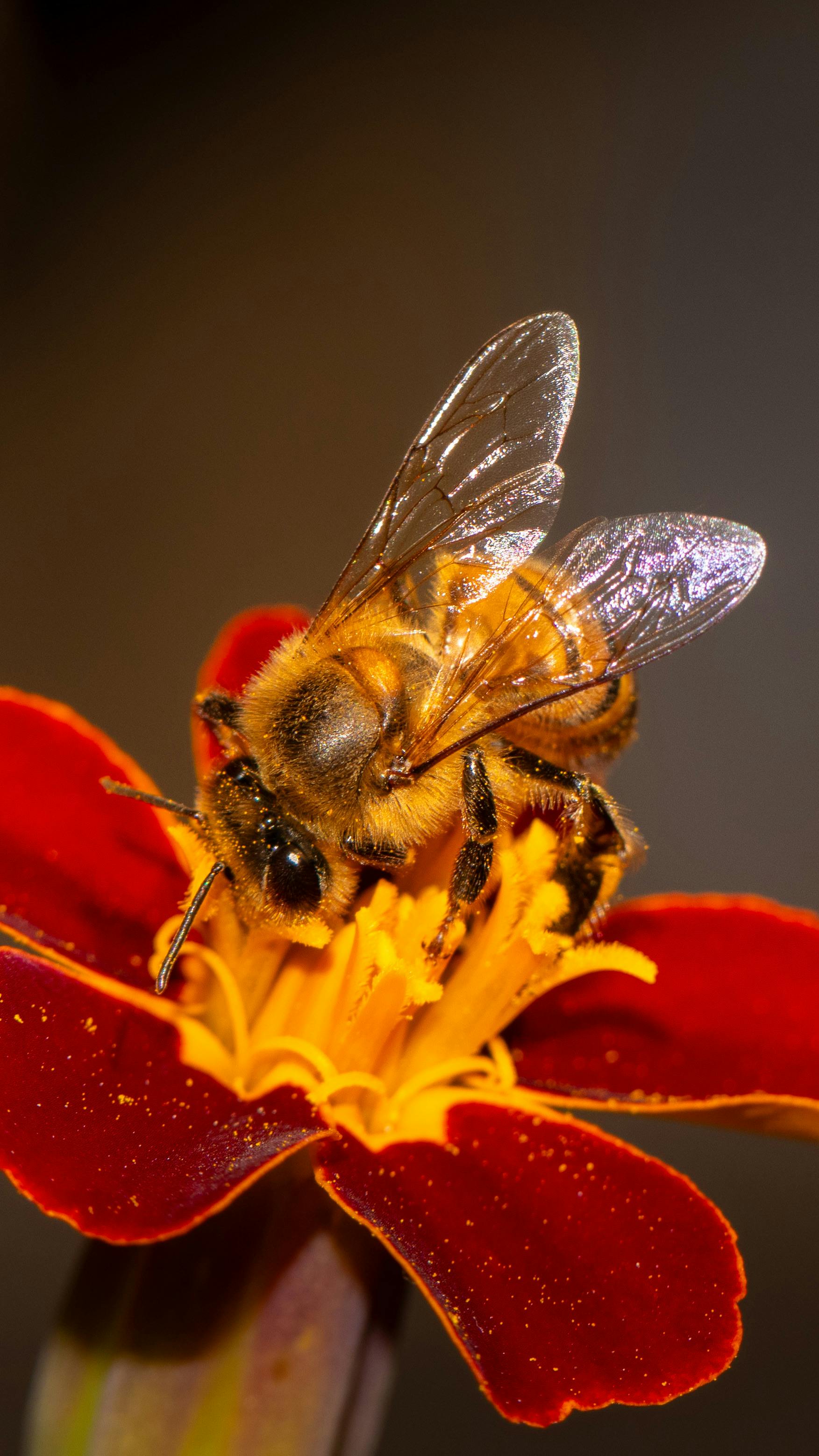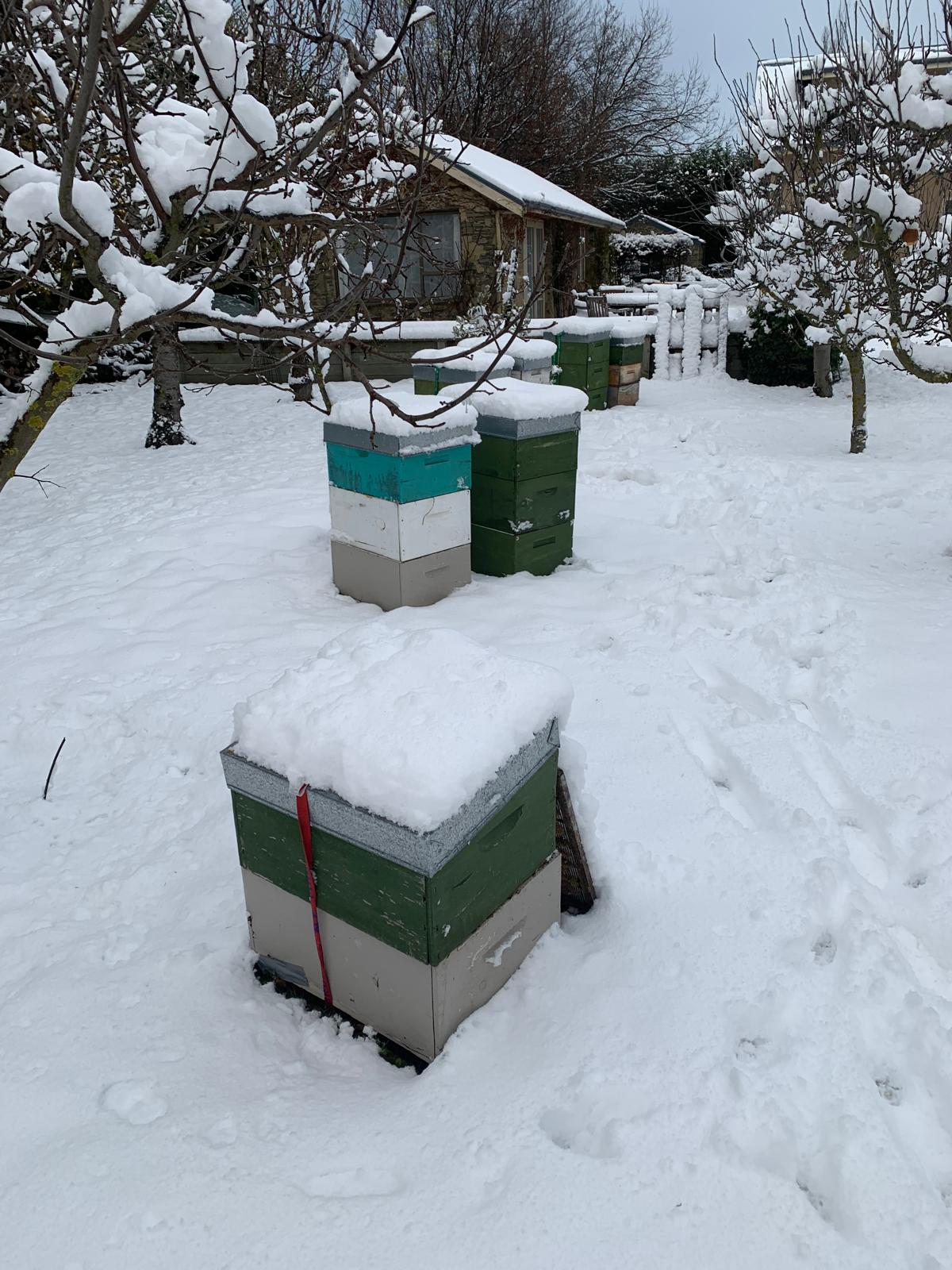Winter in the Hive – A Queenstown Beekeeper's Update
From the Hives of Be Local Honey Collective
Jacks Point • Gibbston Valley • Lake Hayes | July–August 2025 – Raymond Key – Head Beekeeper
The Queen's Winter Strategy
Right now, our queens are in strategic rest mode, laying just 50-100 eggs per day (compared to springs 2,000!) — enough to maintain the cluster but not overwhelm their winter food stores.
But here's the crucial timing: as Queenstown's daylight hours stretch toward late August, each queen will sense the change and begin ramping up egg production to rebuild her army for spring's nectar bonanza.
The queen is literally the heartbeat of the hive. If she falters — which can happen with older queens after our intense Central Otago summers — the entire 50,000-bee colony faces collapse. That's why early spring queen assessment is one of our most critical jobs.
Why We Never Peek in Winter
You might wonder: "Why not just open the hive and check?"
Here's the stark reality: breaking that cluster on a cold Queenstown morning could kill them. When we lift the lid, the cluster disperses to defend the hive. On a 2°C morning, they burn precious energy trying to reform their heat ball — energy they can't spare.
Instead, we've become hive detectives, using infrared temperature guns to read cluster health through the wood, and simply lifting hives to gauge their winter food stores by weight.
The Wasp Wars of Late Winter
Here's a threat most people don't know about: German and common wasps become increasingly desperate as winter drags on. With natural food scarce, they'll attempt raids on our beehives — especially targeting colonies with weakened defenses.
Picture a handful of wasps trying to overwhelm 20,000 winter-clustered bees. It sounds impossible, but when bees are conserving energy and staying clustered, their guard is reduced.
Our defense strategy? Entrance reducers (think of them as security doors) and regular monitoring for wasp activity around our sites.
Winter Fuel: Living Off Summer's Harvest
Remember those busy summer days when you saw our bees working the clover and wildflower around Lake Hayes, the wild thyme along Gibbston's walking tracks, and the precious manuka scattered through the Wakatipu moutains?
All that work pays off now. Each hive is surviving entirely on 20-30kg of stored honey and pollen — their own golden pantry, laid down flower by flower during Queenstown's brief but intense flowering season.
If a colony feels light when we lift it (yes, we can tell by weight!), we'll supplement with fondant or sugar blocks — like emergency rations to see them through to spring.
Behind the Scenes: What Beekeepers Do When Bees Rest
Winter might be quiet at the hives, but for us, it's preparation season:
- Hive health checks through external observation and weight assessment
- Varroa mite treatments — targeting these parasites when bee populations are lowest
- Equipment maintenance — building new boxes, repairing frames, sterilizing gear
- Queen-rearing planning — preparing for spring splits and requeening
- Site scouting — we're always looking for new flowering locations around Central Otago
Think of it as the off-season training that makes championship performance possible.
Coming Soon: The Spring Explosion
By September, everything changes. Queens will shift into overdrive, laying up to 2,000 eggs daily. Scout bees will venture out on cleansing flights, then begin mapping every flowering tree and shrub from Arrowtown to Jacks Point.
For us, it means suiting up for the busiest season: hive splits, swarm prevention, queen replacement, and positioning hives for the massive willow, gorse (for pollen), and orchard blooms that make Queenstown honey so distinctive.
Be Part of the Wakatipu Bee Community
Choose Local Honey
-Every jar of Be Local honey supports sustainable, small-scale beekeeping right here in Queenstown. When you buy local, you're investing in healthy bee populations and preserving the flowering landscapes that make our region special.
Plant Bee-Friendly Gardens
-Leave those early spring flowering plants like gorse, willow, and flowering cherry trees. They're often the first food available when our bees emerge from winter clustering.
Stay Connected
-Follow our seasonal updates to learn what's happening in the hives throughout the year. Next up: "Spring Awakening: When 2,000 Eggs a Day Changes Everything" — coming September 2025.


